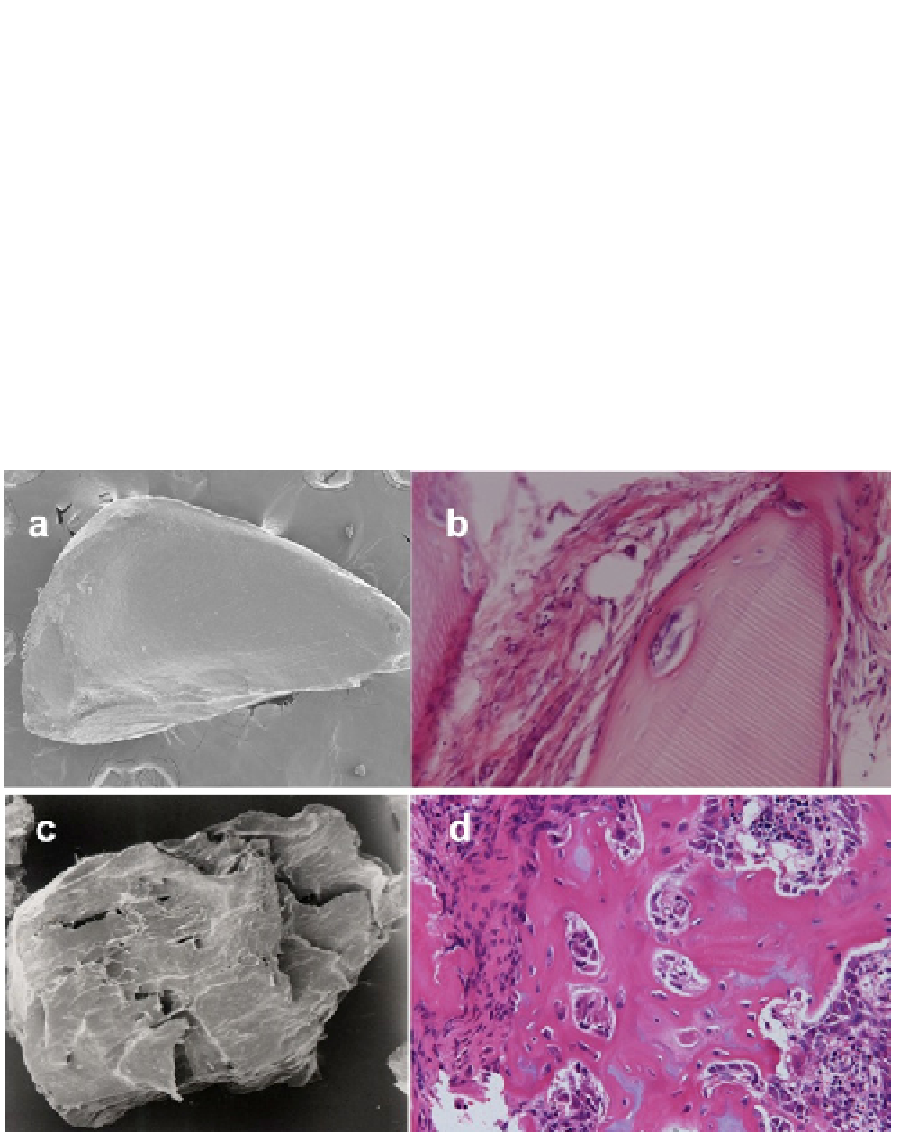Biomedical Engineering Reference
In-Depth Information
Dentin and bone are mineralized tissues and almost similar in chemical components. Both
DDM and DBM are composed of predominantly type I collagen (95%) and the remaining as
non-collagenous proteins including small amount of growth factors (Finkelman et al., 1990).
In other words, DDM and DBM can be defined as acid-insoluble collagen binding bone
morphogenetic proteins (BMPs), which are member of transforming growth factor-beta
(TGF-β) super-family. BMPs were discovered from bone matrix (Urist, 1965; Sampath &
Reddi., 1983), and had bone-inducing property in non-skeletal site (Murata et al., 1998).
Animal dentin-derived BMPs were extracted with 4M guanidine HCl, and partially purified
from rat, rabbit, and bovine (Butler et al., 1977; Urist & Mizutani, 1982; Kawai & Urist, 1989;
Bessho et al, 1990). In addition, the concentration of TGF-β, Insulin growth factor-I (IGF-I)
and Insulin growth factor-II (IGF-II) were detected in human dentin (DDM). Briefly, the
three growth factors were measured in the following concentration (ng/μg 4M guanidine
hydrochloride-EDTA protein): TGF-β (0.017), IGF-I (0.06) and IGF-II (0.52). All 3 growth
factors were present in concentrations lower than that in human bone (Finkelman et al.,
1990). Recently, both mature and immature types of BMP-2 were detected in human dentin
and dental pulps (Ito et al., 2008).
a: SEM of DDM (granule size: 0.5mm), Note: smooth surface and no crack.
b: bone induction by DDM at 4 weeks.
c: SEM of DBM (granule size: 0.5mm), Note: micro-cracks and spaces of blood vessels.
d: bone induction by DBM at 4 weeks.
Fig. 2. Dematerialized dentin matrix (DDM) and dematerialized bone matrix (DBM)

